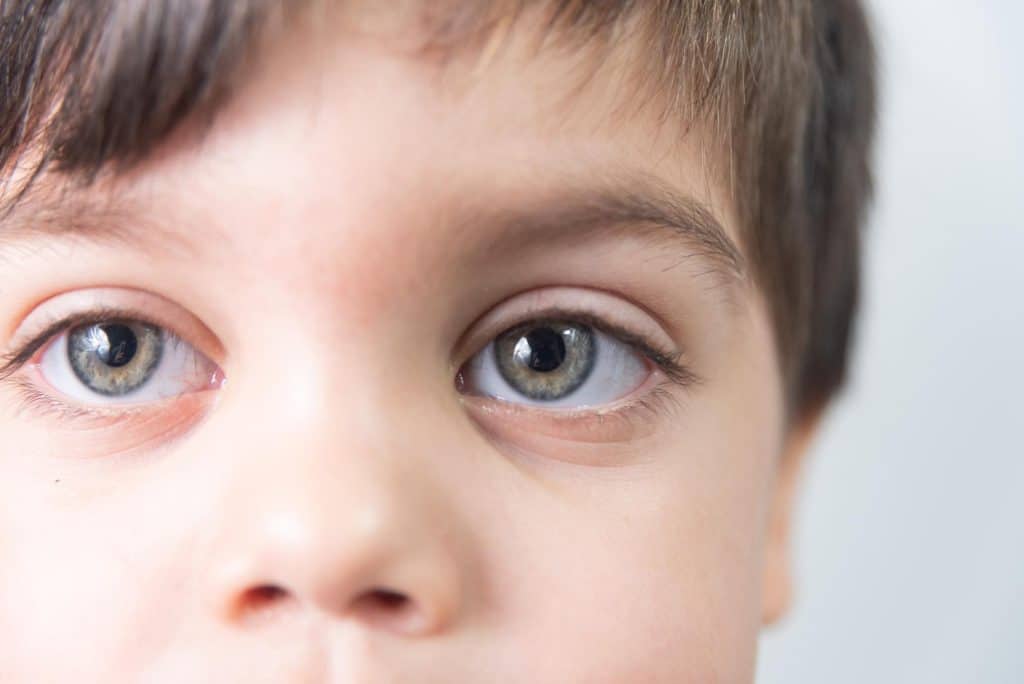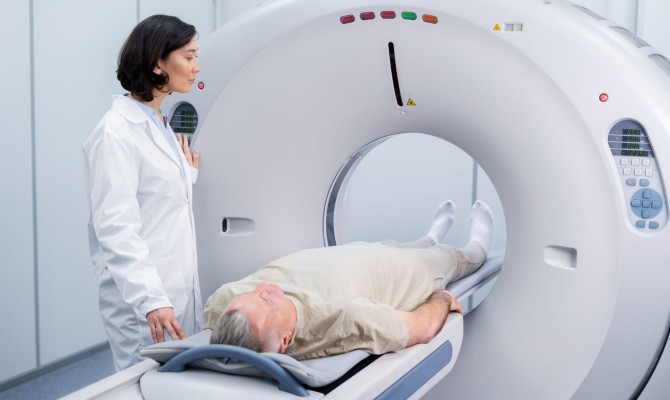Lazy eye: Symptoms, Causes and Management

- Lazy eye
- 17 Aug 2023
Overview
What is Lazy Eye?
Amblyopia, also called lazy eye, is a vision condition affecting children and adults worldwide. Despite the absence of any significant anatomical defects or eye diseases, it is characterized by limited or impaired vision in one eye.
This article aims to provide information on lazy eye causes, signs, and treatments. We can improve our understanding of this disorder and take proactive measures to prevent it, intervene early, and maintain excellent visual health.

Symptoms

Symptoms of Lazy Eye
The following are some common signs and symptoms:
- Reduced vision in one eye
- Poor depth perception
- Squinting
- Eye misalignment
- Head tilting
- Difficulty with eye teamwork
Several symptoms may indicate the presence of this visual disease that it may present.
Decreased clarity of vision.
- One primary symptom is loss of vision in one eye compared to the other. Blurring or blurry vision may be challenging to focus on things or read the fine print with the affected eye.
A poor sense of depth
- Additionally, it may affect depth perception, making it more challenging to determine object distances accurately.1Symptoms| Researched based study from Nlm.nih.gov This may impact activities like catching a ball or navigating through congested areas.
Shutting one eye or squinting
- Children may squint or close one eye automatically to try to make up for the impaired vision of the affected eye. The visual confusion brought on by the brain’s inability to combine images from both eyes is reduced due to this conduct.
Misaligned eyes
- It may occasionally accompany strabismus, an eye disorder marked by misalignment. This might be seen as a turning inward of one eye. Either upward, downward, or outward.1Symptoms| Researched based study from Nlm.nih.gov
Tilting of the head
- People occasionally tilt their heads to one side to align their eyes and enhance visual acuity. This head tilt enables the brain to depend more on the stronger eye and lessens the impact of the misalignment.
Difficulty with eye teamwork
- It may cause issues with the coordination of the two eyes, impairing binocular vision or the ability of the eyes to function together. This may affect tasks requiring accurate tracking of moving objects and depth perception1Symptoms| Researched based study from Nlm.nih.gov
Causes
What are the causes of Lazy Eye?
While lazy eye is typically associated with children, it can persist or develop in adulthood as well for several reasons, such as:
Strabismus
- In this eye alignment problem, one eye may turn inward (esotropia) or outward (exotropia) in this eye alignment problem. Amblyopia develops over time due to the brain processing different visual information from each eye, which causes the misaligned eye’s optical signals to be suppressed.2Causes| Researched based study from Nlm.nih.gov
Refractive mistakes
- The brain may favor the eye with clearer vision, making the other eye lazy, if there is a considerable difference in the refractive error (such as nearsightedness, farsightedness, or astigmatism) between the two eyes.
Childhood cataracts
- Cataract formation in children’s eyes might obstruct healthy visual growth. Amblyopia may result from the brain suppressing the afflicted eye’s visual information.
Obstructing or depriving the eyes
- A lazy eye can result from anything that prevents the eye from seeing clearly throughout the crucial time of visual development. This can include eye problems that seriously affect vision, such as eyelid tumors, ptosis, and eye diseases.2Causes| Researched based study from Nlm.nih.gov
Genetics
- It’s important to keep in mind that lazy eye often results from developmental issues rather than inactivity or lack of effort.
- Amblyopia is predisposed by genetics, and if a close relative has experienced the disorder, the probability of having it also increases.2Causes| Researched based study from Nlm.nih.gov It is essential to recognize and treat it as soon as possible in order to prevent long-term vision loss.
Types
What are the types of Lazy Eye?
Strabismus amblyopia
- When the eyes are not aligned, this happens. One eye may experience decreased vision as a result of the brain ignoring visual input from that eye. This misalignment can be constant or intermittent.6Types| Researched based study from Aapos.org
Refractive amblyopia
- Lazy eyes can result from refractive defects including nearsightedness (myopia), farsightedness (hyperopia), or astigmatism. When one eye’s refractive error differs greatly from the other’s, the brain prefers the eye with better vision.
Deprivation amblyopia
- It occurs when one eye’s vision is blocked or obstructed during a child’s crucial phase of visual development.
- Common causes include congenital cataracts, corneal opacities, or other conditions that prevent light from entering the eye.
Anisometropia amblyopia
- It refers to a large discrepancy between the two eyes’ refractive errors.6Types| Researched based study from Aapos.org
Diagnosis
How is Lazy Eye diagnosed?
Medical history
- A thorough medical history is collected, including any past eye issues or family history of eye diseases.
Test of visual acuity
- By reading letters or symbols on an eye chart, this technique evaluates how well each eye can see. The subject will be instructed to read the tiniest line of characters or symbols they can make out while covering one eye at a time.
Test for refraction
- This aids in identifying any refractive errors, such as astigmatism, nearsightedness, or farsightedness, in either eye. The test subject looks through various lenses, indicating which ones provide clearer eyesight.
Ocular alignment and motility assessment
- The eye care specialist will check the position of the eyes and gauge ocular movements.
Cover test
- This is done to check for any alignment issues. The eye care practitioner asks the patient to concentrate on a specific target while covering one eye, then the other, to watch how the eyes move and line up.
Refractive correction
- The eye care practitioner can use a retinoscope or autorefractor to determine the precise prescription for glasses or contact lenses.
Further tests
- In some instances, additional examinations of the front and back of the eyes, a search for ocular diseases or illnesses, and tests of depth perception and visual field may be carried out to assess the general health.3Diagnosis| Researched based study from Nlm.nih.gov
Treatment
What is the treatment?
Corrective lenses
- Wearing glasses or contact lenses with the proper prescription can help enhance vision and lessen the imbalance between the eyes if refractive defects like nearsightedness, farsightedness, or astigmatism are a factor.
Patching
- This involves placing an eye patch over the stronger eye for several hours daily. This forces the brain to rely on the less-reliable eye, driving visual growth in that eye.
- It is frequently combined with additional therapies like vision therapy or ex Treatment Corrective lenses.
- Wearing glasses or contact lenses with the proper prescription can help enhance vision and lessen the imbalance between the eyes if refractive defects like nearsightedness, farsightedness, or astigmatism are a factor.
Eyedrops with atropine
- Atropine eye drops can temporarily blur vision in the stronger eye instead of an eye route. This urges the brain to make better use of the weaker eye.
Treatment for vision
- This comprises several exercises and activities to enhance coordination and visual processing.
- These involve eye tracking, concentrating drills, and binocular vision-enhancing exercises. It is frequently carried out with the help of an experienced doctor.
Treatment of underlying conditions
- Treatment for these disorders may be required if they are to blame, like strabismus or cataracts. To restore clear eyesight, this may entail surgical correction or cataract removal.4Treatment| Researched based study from Nlm.nih.gov ,5Treatment| Researched based study from Nlm.nih.gov
What is the right time to treat a lazy eye?
- While the optimal time for treating lazy eye, is during childhood, it is generally not considered too attempt treatment in adulthood. The earlier the condition is addressed, the better the chances of achieving significant improvement in vision.
Complications
Complications arises due to Lazy Eye
Decreased vision
- Vision loss in the affected eye is the main side effect. Even with corrective procedures like glasses or contact lenses, it may remain permanently impaired if the issue is not treated.
Issues with the perception of depth
- It can interfere with depth perception, making it challenging to gauge distances and recognize how things are positioned with one another in three dimensions. This may affect driving, playing sports, and navigating surroundings.
Binocular vision problems
- It could hamper the growth of binocular vision, which is the capacity for both eyes to function cooperatively. This may cause issues with depth perception, ocular coordination, and the ability of both eyes to work properly.
A permanent vision impairment
- A lazy eye has the potential to permanently damage vision in the affected eye if left untreated for an extended length of time, particularly beyond the critical period for visual development in childhood. Intervention at a young age is crucial.1Complications| Researched based study from Nlm.nih.gov
Prognosis
What is the prognosis of Lazy Eye?
- Keep in mind that the underlying cause, onset age, and timely care all play a role in this.
- Vision therapy and other remedial methods can be used to address the condition early on and improve visual outcomes by reducing associated problems.
- It is advised to have regular eye checkups, especially throughout childhood, to detect and treat it as soon as possible.
Any feedback on this article?
 This Articles content was accurate
This Articles content was accurate Very Informative Article
Very Informative Article I have a question or a comment
I have a question or a comment
 This article contains inaccurate content
This article contains inaccurate content This article was not helpful
This article was not helpful I have a question or a comment
I have a question or a comment
We appreciate your helpful feedback!
Checkout our social pages
References
-
National Library of Medicine
Amblyopia | Symptoms | Introduction | Complications
-
National Library of Medicine
Amblyopia (lazy eye) in children | Causes
-
National Library of Medicine
Amblyopia in children (aged 7 years or less) | Diagnosis
-
National Library of Medicine
The Amblyopia Treatment Studies: Implications for Clinical Practice | Treatment
-
National Library of Medicine
Current Management of Childhood Amblyopia | Treatment
-
American Association for Pediatric Ophthalmology & Strabismus
Amblyopia | Types





































